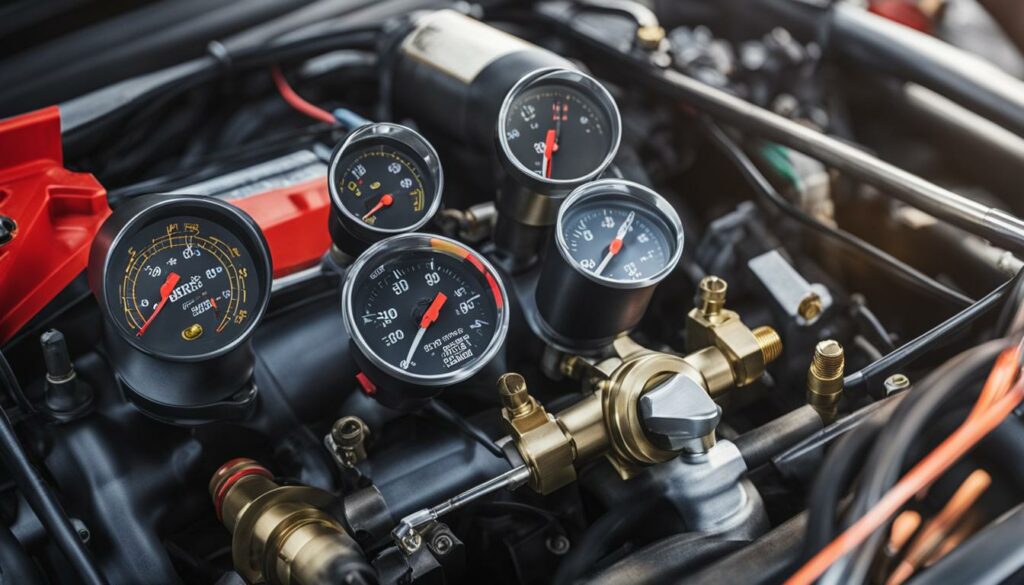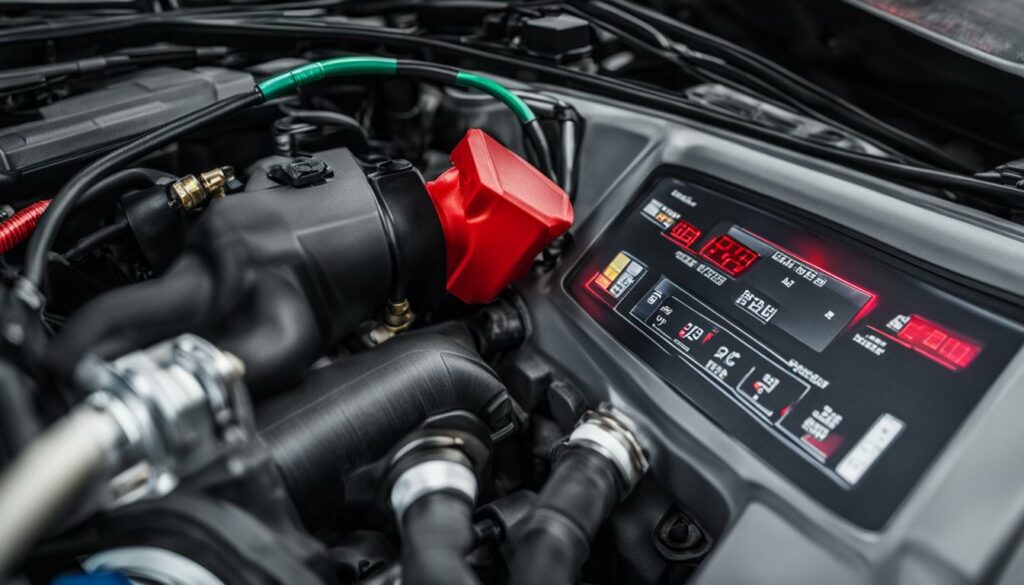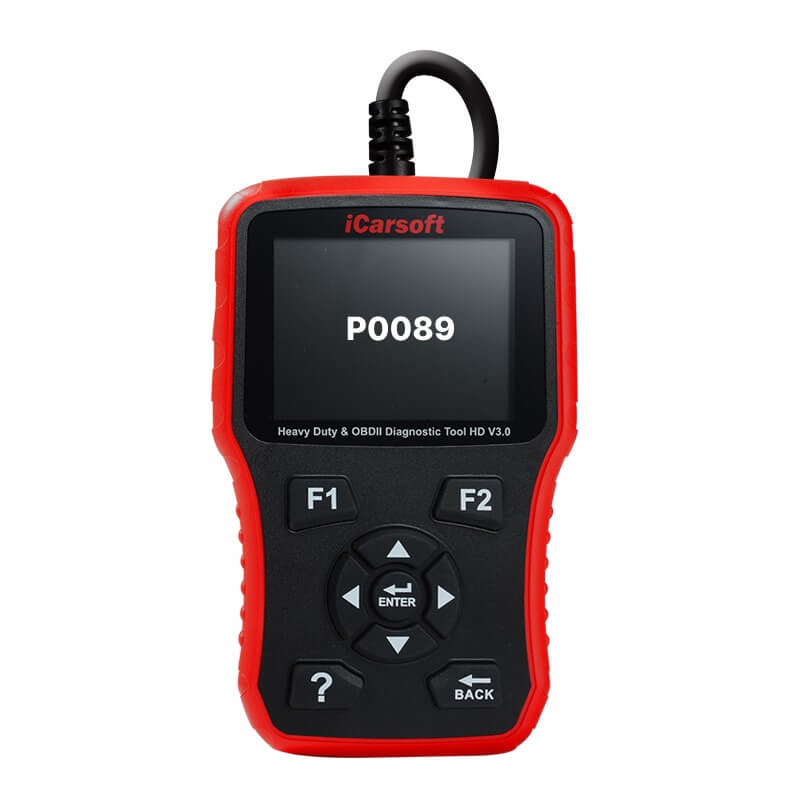P0089 – Fuel Pressure Regulator Performance
POSTED IN pcodes
Welcome to our article on P0089 – Fuel Pressure Regulator Performance! If you’re experiencing a performance issue with your fuel system, this is a diagnostic trouble code you should be aware of. The P0089 code is triggered when the fuel pressure in your vehicle does not meet the desired levels set by the powertrain control module (PCM).
This code is commonly caused by fuel pressure regulator failure, fuel pump failure, or fuel injector leaks. When your fuel pressure regulator is not functioning properly, it can affect the performance of your engine and overall fuel delivery system.
Some common symptoms of the P0089 code include a lit check engine light, poor fuel economy, and poor acceleration. If you notice any of these signs, it’s important to address the issue promptly to prevent further damage to your vehicle’s engine.
To diagnose the P0089 code, it’s crucial to have a reliable reference such as a repair manual or an online resource. This will help you understand the specific steps needed to troubleshoot and resolve the issue. Keep in mind that the solution for P0089 may vary depending on the make and model of your vehicle.
Key Takeaways
- P0089 is a diagnostic trouble code that indicates fuel pressure regulator performance issues in your vehicle.
- Common causes of the P0089 code include fuel pressure regulator failure, fuel pump failure, and fuel injector leaks.
- Symptoms of the P0089 code may include a lit check engine light, poor fuel economy, and poor acceleration.
- Proper diagnosis of the P0089 code requires a reliable reference such as a repair manual or online resource.
- Consulting a professional mechanic is recommended for accurate diagnosis and repair of the P0089 code.
What Does the P0089 Code Mean?
The P0089 code, also known as “Fuel Pressure Regulator Performance,” is set when the PCM determines that the desired and actual fuel pressures do not correlate. This could indicate that the fuel pressure regulator is not functioning properly. It is important to note that the definition of code P0089 may vary depending on the vehicle manufacturer. The fuel pressure regulator is responsible for maintaining the required pressure drop at the fuel injector tips.
Buy tested tuning file for Adblue / EGR / DPF / Adblue off now!
In fuel-return-type injection systems, the regulator is mounted on the injectors’ downstream side at the end of the fuel rail. In returnless fuel systems, the regulator is integrated into the fuel pump module inside the tank. The fuel pressure sensor determines both the fuel pump output and the actual fuel rail pressure.

As shown in the diagram above, the fuel pressure regulator plays a crucial role in maintaining the proper fuel pressure in the system.
Possible Causes of the P0089 Code
The P0089 code can have various possible causes. Understanding these causes is essential for accurate diagnosis and effective resolution. Here are some potential reasons for the P0089 code:
- Fuel Lines Blockage: Blocked fuel lines can restrict the flow of fuel and lead to inadequate pressure levels.
- Clogged Fuel Filter: A clogged fuel filter can impede the smooth flow of fuel, causing pressure issues.
- Defective Pressure Regulator: A faulty pressure regulator may fail to maintain the desired fuel pressure, leading to performance problems.
- Faulty Sensor: A malfunctioning fuel pressure sensor can provide inaccurate readings, resulting in incorrect fuel pressure regulation.
- Bad Fuel Pump: A malfunctioning fuel pump may not deliver the required fuel pressure, impacting engine performance.
- System Leaks: Worn or damaged seals, cracked hoses, or loose clamps in the fuel system can cause fuel leaks, affecting pressure levels.
- Broken Pressure Relief Valve: A broken pressure relief valve can disrupt the proper functioning of the fuel system and result in pressure irregularities.
- Faulty Wires or Short Circuits: Wiring issues, such as damaged wires or short circuits, in the fuel pressure rail sensor or regulator can trigger the P0089 code.
These possible causes provide a starting point for diagnosing the P0089 code. A thorough inspection and testing process can help identify the specific underlying issue.
Common Symptoms of the P0089 Code
The P0089 code is accompanied by various symptoms that indicate potential issues in the fuel delivery system. It is essential to be aware of these symptoms to diagnose and address the problem effectively. Here are the common symptoms associated with the P0089 code:
- Poor acceleration: You may experience a noticeable decrease in your vehicle’s acceleration capabilities. The engine may struggle to deliver the required power, affecting the overall performance.
- Increased fuel consumption: The P0089 code can cause your vehicle to consume fuel at a higher rate than usual. This can result in decreased fuel efficiency and increased expenses at the pump.
- Lean or rich engine conditions: The P0089 code can lead to an imbalance in the air-fuel mixture, causing the engine to run either too lean or too rich. This imbalance can affect the combustion process and result in poor engine performance.
- Loss of power: If you notice a significant drop in power while accelerating or maintaining speed, it could be a symptom of the P0089 code. The engine may struggle to generate the necessary power output.
- Rough idling: A rough or uneven idle can indicate potential fuel delivery issues associated with the P0089 code. The engine may struggle to maintain a smooth and stable idle speed.
- Check engine light illuminated: The P0089 code triggers the illumination of the check engine light on your vehicle’s dashboard. This serves as a warning sign that there is a problem with the fuel pressure regulator’s performance.
- Starting difficulties: You may experience difficulties starting your vehicle, especially when the P0089 code is present. The engine may require multiple attempts to start or may not start at all.
- Stalling while driving: The engine may stall unexpectedly while driving, which can be hazardous and requires immediate attention. This symptom indicates a severe fuel delivery issue that needs to be addressed promptly.
It is important to note that the presence of other related codes, such as lean O2 sensor readings, may accompany the P0089 code. Resolving the P0089 code is crucial before addressing any other codes or issues to ensure proper diagnosis and effective repairs.
How to Diagnose the P0089 Code
Properly diagnosing the P0089 code requires a step-by-step approach to identify the underlying issue. Follow these diagnostic steps to pinpoint the cause of the problem:
- Fuel Pressure Check:Perform a fuel pressure check by attaching a mechanical gauge to the fuel rail. This allows you to measure the fuel pressure accurately.
- Scan Tool:Use an advanced scan tool to monitor the fuel pressure in returnless fuel systems. This tool provides real-time data to assist in the diagnosis.
- Fuel Pump Inspection:Inspect the fuel pump for any signs of damage or malfunction. A faulty fuel pump can contribute to the P0089 code.
- Fuel Line Inspection:Examine the fuel lines for blockages or leaks. Any obstructions or leaks can disrupt fuel flow and trigger the P0089 code.
- Filter Inspection:Check the fuel filter for clogs or excessive debris. A clogged fuel filter can cause insufficient fuel pressure, resulting in the P0089 code.
- Sensor Testing:Test the fuel pressure sensor to ensure it is functioning correctly. A faulty sensor could provide inaccurate readings and trigger the P0089 code.
- Wiring Inspection:Inspect the wiring connected to the fuel pressure sensor and other relevant components. Faulty wiring or short circuits can disrupt the proper functioning of the system.
By following these diagnostic steps, you can gain valuable insights into the cause of the P0089 code and take appropriate measures to resolve it.

How to Fix the P0089 Code
Fixing the P0089 code requires addressing the underlying cause. Consulting a repair manual or seeking the help of a professional mechanic is highly recommended to ensure an accurate diagnosis and comprehensive repair. The solution for P0089 will vary depending on the specific vehicle and its components, so a thorough diagnosis is crucial to address the root cause of the issue.
In some cases, a fuel pump replacement may be necessary. However, it is essential to perform a thorough diagnosis before considering any replacement or repair options. This will help avoid unnecessary expenses and ensure an effective resolution.
Please note that there are several related OBD-II codes to the P0089 code, such as P0090, P0091, and P0092. If any of these codes are present, they may need to be addressed alongside the P0089 code to fully resolve the issue.
By following the appropriate diagnosis steps, consulting reliable resources, and seeking professional assistance when needed, you can effectively fix the P0089 code and restore your vehicle’s fuel pressure regulator performance.
| Steps to Fix P0089 Code: |
|---|
| 1. Consult a repair manual or seek the help of a professional mechanic. |
| 2. Perform a thorough diagnosis to determine the root cause of the code. |
| 3. Address any related OBD-II codes that may be present. |
| 4. Follow manufacturer-specific repair instructions or professional recommendations. |
| 5. Consider a fuel pump replacement if necessary, after accurate diagnosis. |
| 6. Test the repaired system to ensure the P0089 code is resolved. |
Conclusion
In conclusion, the P0089 code is a diagnostic trouble code that indicates fuel pressure regulator performance issues. This code is commonly caused by fuel pressure regulator failure, fuel pump failure, and fuel injector leaks. When faced with the P0089 code, it is important to follow specific troubleshooting steps to accurately diagnose and repair the issue.
While it is possible to address the P0089 code yourself with the help of a repair manual or online resources, it is highly recommended to consult a professional mechanic for a thorough diagnosis and repair. They have the expertise and knowledge to identify the root cause of the problem and provide appropriate solutions.
Remember, the troubleshooting steps and repair options for the P0089 code may vary depending on the specific vehicle and its components. By seeking the assistance of a professional mechanic, you can ensure the proper diagnosis and resolution of the fuel pressure regulator performance issue.
FAQ
What does the P0089 code mean?
The P0089 code, also known as “Fuel Pressure Regulator Performance,” is set when the powertrain control module (PCM) determines that the fuel pressure does not match the desired levels. This could indicate that the fuel pressure regulator is not functioning properly.
What are the possible causes of the P0089 code?
The P0089 code can be caused by various factors, including blocked fuel lines or a clogged fuel filter, defective pressure regulator, faulty sensor, bad fuel pump, system leaks, broken pressure relief valve, or faulty wires and short circuits.
What are the common symptoms of the P0089 code?
Common symptoms of the P0089 code include poor acceleration, increased fuel consumption, lean or rich engine conditions, loss of power, rough idling, illuminated check engine light, starting difficulties, and stalling while driving.
How is the P0089 code diagnosed?
Diagnosing the P0089 code involves performing a fuel pressure check, using a scan tool to monitor fuel pressure, inspecting the fuel pump, fuel lines, and filter for damage or blockages, testing the fuel pressure sensor, and checking the wiring for faults or short circuits.
What is the solution for the P0089 code?
Fixing the P0089 code requires addressing the underlying cause, which can vary depending on the specific vehicle and its components. It is recommended to consult a repair manual or seek the help of a professional mechanic for an accurate diagnosis and repair.


